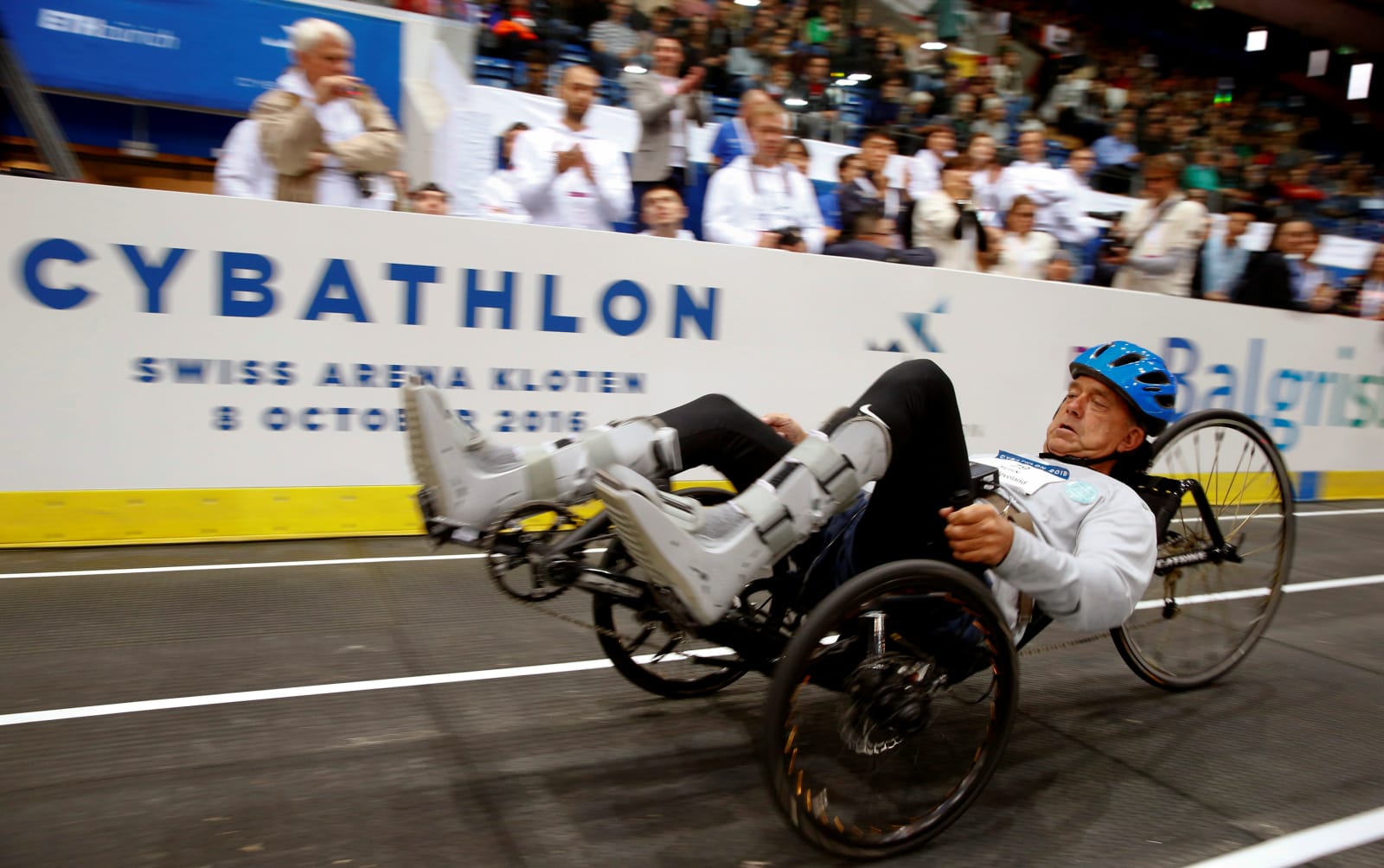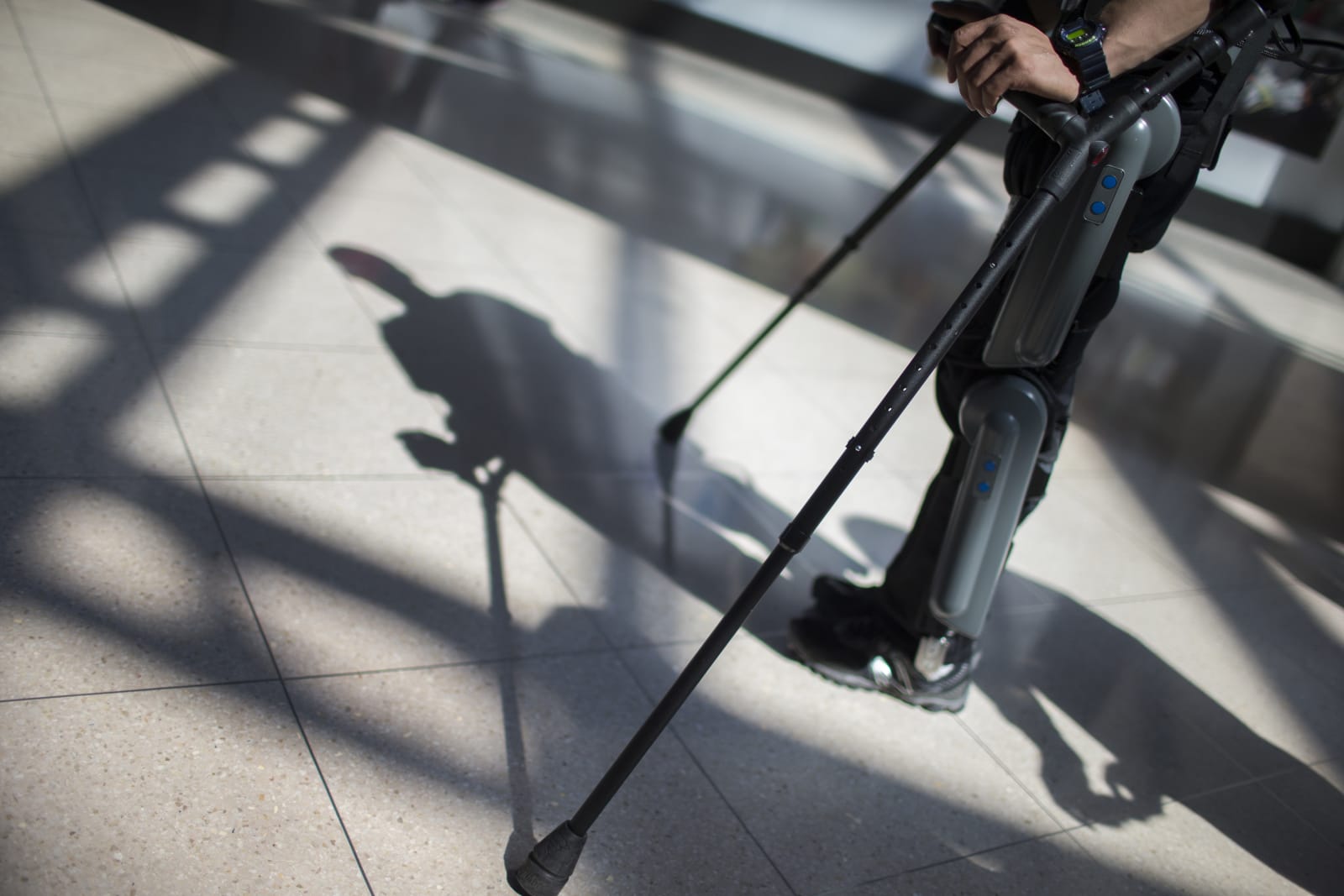ARGO Medical Technologies Unveils Advancement of its Exoskeleton Technology with Launch of ReWalk Rehabilitation 2.0
ARGO Medical Technologies has unveiled the newest generation of its ReWalk Rehabilitation exoskeleton that enables individuals with spinal cord injuries the ability to walk again. The 2.0 system is designed to make it easier to treat multiple individuals each day, it also has new software features that support beginner users and new sizing that allows each system to fit a broader range of patients.
ReWalk Rehabilitation 2.0 Highlights:
· Rapid Exchange: A new slider adjustment mechanism accelerates and simplifies the process of sizing for individual users with a new sizing scale and a simple "click" that indicates the alignment of joints.
· Universal Sizing: The new model fits a wide range of heights in just one device. Clinicians can easily adjust the unit to fit users between 160cm -190cm in height.
· Beginner Gait Mode: Newly enhanced software has improved the learning process to support and transition new users as they learn to take their first steps in the ReWalk.
"I am very excited to launch this new generation of exoskeleton technology. We have learned from the everyday use by clinicians and the experience of their patients and believe as a company it is essential we continue to enhance this technology to meet the needs of those working with it." said Larry Jasinski, ARGO CEO. "The ReWalk Rehabilitation 2.0 offers an experience that is very close to natural walking and this new model will improve the learning curve to allow ReWalkers to quickly gain comfort as they begin to walk independently."
ARGO currently offers two ReWalk models - the ReWalk Personal, currently available in Europe and pending FDA review in the US; and the ReWalk Rehabilitation which is now available in Europe, Israel and the United States. Both models are designed to provide a customized user experience with on-board computers and motion sensors that restore self-initiated walking without needing tethers or switches to begin movement. The ReWalk uses patented technology with motorized legs that power knee and hip movement. It controls movement using subtle changes in center of gravity, mimics natural gait and provides functional walking speed. A forward tilt of the upper body is sensed by the system, which triggers the first step. Repeated body shifting generates a sequence of steps, which allows natural and efficient walking.
"Training in the ReWalk has changed my life in a way I did not believe possible after I became paralyzed," said Sgt. Theresa Hannigan, U.S. Army Retired and ReWalk user. "When I use the ReWalk I regain my independence; I have been able to walk a 1 mile road race, and stand up hug my friends and family."
 Andre van Rüschen slowly climbed a five-step ramp at the end of his race. With a black processor strapped to his back and leg supports on either side of his lower limbs, he stayed focused on the body-machine coordination that was keeping him upr...
Andre van Rüschen slowly climbed a five-step ramp at the end of his race. With a black processor strapped to his back and leg supports on either side of his lower limbs, he stayed focused on the body-machine coordination that was keeping him upr...
 Andre van Rüschen slowly climbed a five-step ramp at the end of his race. With a black processor strapped to his back and leg supports on either side of his lower limbs, he stayed focused on the body-machine coordination that was keeping him upr...
Andre van Rüschen slowly climbed a five-step ramp at the end of his race. With a black processor strapped to his back and leg supports on either side of his lower limbs, he stayed focused on the body-machine coordination that was keeping him upr...
 Andre van Rüschen has no memory of the day he lost all feeling in his legs. After a car accident in Germany, he had a spinal cord injury that left him paralyzed from the waist down. When he woke up from a coma in a hospital in Hamburg, the docto...
Andre van Rüschen has no memory of the day he lost all feeling in his legs. After a car accident in Germany, he had a spinal cord injury that left him paralyzed from the waist down. When he woke up from a coma in a hospital in Hamburg, the docto...
 When the US Department of Veteran Affairs paid for Retired US Army Sergeant Theresa Hannigan's ReWalk exoskeleton, it also decided to pick up the tab for other vets. Now, the agency has made it official: it has recently sent out a memorandum that out...
When the US Department of Veteran Affairs paid for Retired US Army Sergeant Theresa Hannigan's ReWalk exoskeleton, it also decided to pick up the tab for other vets. Now, the agency has made it official: it has recently sent out a memorandum that out...



